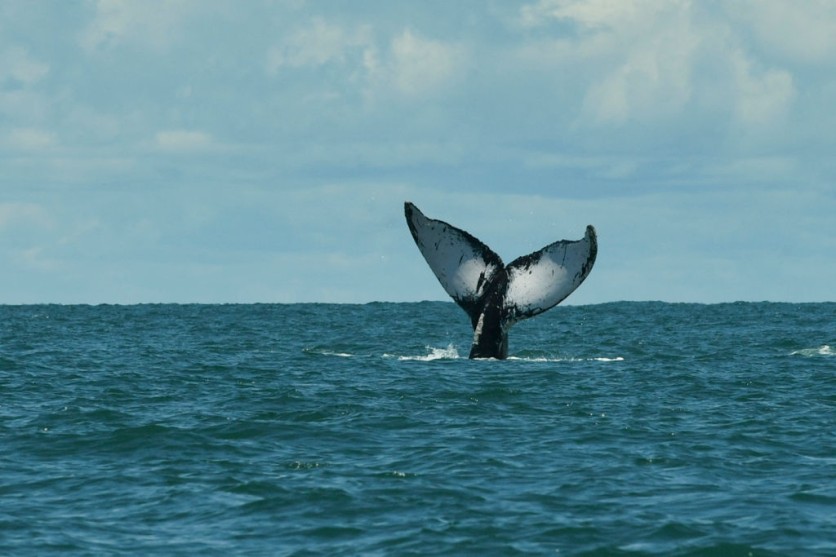Researchers have achieved a rare feat by capturing extraordinary footage of a 900-kilogram nursing humpback whale, providing valuable insights for humpback conservation efforts, according to a report by AFP.
The remarkable footage shows a trail of milk dispersing in the depths of the Pacific near Colombia's coast as the calf separates from its mother after nursing.

Intimate Moment
Rising to the surface to breathe in the Gulf of Cupica, the calf's intimate moment with its mother was recorded by biologist Natalia Botero and her team at the Macuaticos Foundation in August last year.
Previously, nursing events had been captured on camera only twice, making this footage a significant scientific and conservation achievement. Botero emphasized the rarity of lactation recordings, despite the tireless efforts of researchers over the years.
The footage not only marks an important scientific milestone but also contributes to humpback whale conservation.
"Despite decades of efforts by thousands of researchers, hours of work, collaborations, lactation recordings are extremely rare," Botero said in a statement.
"From a scientific point of view, this is an important step, but also for conservation."
To record this unique event, the researchers carefully attached sensors to the back of the calf using suction cups.
The equipment utilized in the study consisted of a camera, GPS, and a sound-capturing device specifically designed to record the vocalizations of the whales.
Watch the footage here!
Read Also : Sauropods, the World's Largest Dinosaur, Grew to Larger Sizes Multiple Times, Challenging 'Cope's Law'
Lengthy Migration
Every year, a substantial number of humpback whales embark on a lengthy migration from their feeding areas near the Antarctic Peninsula and the Strait of Magellan in Chile to the tropical waters extending from Costa Rica to Peru.
From June to November, the Colombian waters serve as a vital breeding ground for these magnificent marine mammals, which can grow up to lengths of 17 meters (55 feet), weigh approximately 40 tons, and cover an astonishing distance of around 8,500 kilometers (5,280 miles) during each breeding season.
Although humpbacks are now protected from commercial hunting, they still face various threats in their natural environment, according to Botero. By studying their behavior and gaining deeper insights, appropriate conservation actions can be promoted to ensure their long-term survival.
The International Union for Conservation of Nature has noted an increase in humpback whale populations, underscoring the significance of ongoing conservation efforts.
The remarkable footage of the nursing humpback provides a glimpse into the intricate lives of these marine giants, shedding light on their nurturing behaviors and strengthening the scientific understanding of their species.
Related Article : Butterfly Inspired: The World's Lightest Paint Offers Eco-Friendly Alternative to Pigment-Based Paint

ⓒ 2025 TECHTIMES.com All rights reserved. Do not reproduce without permission.




